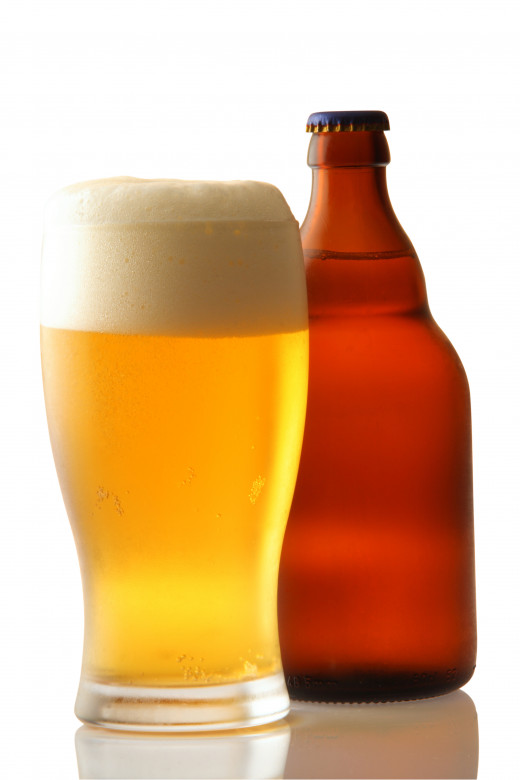How to Like Beer: Beer Styles for Beginners

What beer should I try?
So, you want to know how to like beer. For most folks, their first beer is one of several adjunct lagers: these typically come from well known breweries like Miller, Coors, and Budweiser and have "light" versions. These beers are ubiquitous in high school and college gatherings for their cheap price, relative lack of flavor, and light body for easy chugging. Many people that continue with these beers into adulthood drink them out of familiarity, are afraid to try to fuller flavored or fuller bodied beers, or just like to get drunk cheaply. If you are reading this article, you are probably not one of those people. This is good! You can get into beer in a healthy manner and learn to actually like it.
Everyone is different, but the following styles are some of the easiest for someone that is new to beer to handle. Hops, one of the main flavoring ingredients of beer, provide bitterness and this is one of the taste aspects that can be very offensive for a new beer drinker. Likewise, if the barley is roasted too much, its flavor can overwhelm a nubile. While every beer will be a slightly different take on its style, the name of the beer's style can be very helpful in anticipating how it will taste. These are the ones you should try first.
You'll find that some of these are more obscure varieties and I've intentionally left out brands, for the most part. One of the fun parts of liking beers is finding your local brewers and other small breweries; it is like finding your favorite band instead of the one playing all over the radio.
Hefeweizen
Hefeweizens are excellent summer seasonal beers that are beloved by both new beer drinkers and the most hardened of connoisseurs. This style has perhaps the lowest hop bitterness of any mainstream style along with high carbonation. The high carbonation is another plus for new beer drinkers as it makes the "mouthfeel" (this is beer lingo for, well, how it feels in your mouth) very easy to handle and not much different from soda. While many beers use barley as a primary ingredient, wheat beers such as hefeweizens use a good deal of wheat in comparison to barley. The "hefe" portion of the word refers to the German word for yeast, which is another distinguishing component of the style. Hefeweizens are unfiltered, which means the yeast stays in the bottle and both adds to the carbonation and contributes to its distinctive taste. Because of the special yeast used in hefeweizens, you will note subtle banana, clove, and/or bubblegum scents and flavors. It will still taste like beer, but you should be able to pick up on one or more of these flavors in the better versions of this style.
Which was your first beer style?
Brown Ales
This is perhaps the most vaguely defined style in the list, but it is also probably the easiest to find year round. There are American and English varieties of these, though much of the time the brewer will not indicate a nationality; the difference lies in where the ingredients are sourced. Brown ales get their name from their darker color than pale ales, which comes from roasting the barley longer. While pale ales are almost always too hoppy for a novice beer drinkers, brown ales are usually far more balanced between hop bitterness and malt flavors. You can do quite a bit of exploring within this style alone, and it is a good way to find out which types of beer flavor you prefer without getting too far outside of your comfort zone. There are low bitterness and moderately bitter varieties as well as some that are on the sweet side with others boasting nutty or maltier flavors. This is a style that is adaptable to different seasons, though drinking particular styles in particular seasons is a very optional thing to do for anyone, especially a beginner.
Keller Bier
This style is another German one, but one of the oldest styles around. It had remained rather obscure to non-beer enthusiasts until Samuel Adams released a take on the style as their spring seasonal, Alpine Spring. This is also unfiltered like the hefeweizen and will thus appear cloudy from the yeast, but will not be very carbonated. With low hop bitterness and the prominent yeast, you will avoid prominent hop flavors and get another variety of interesting yeast flavors, though there are often more hops in this style than the hefe. Unless you go for the Samuel Adams keller bier, you will likely have to wander over to the imports section of your local craft beer vendor to find any of this style. While many American breweries have picked up on the Kölsch, the keller bier is predominantly brewed in Germany at this point.
Kölsch
This style is a bit rarer than the hefeweizen and is not made by as many prominent breweries, so you may or may not come across this style as you go along. German import beers of this kind will only come fromCologne, its original place of brewing, due to German laws regarding purity. Most craft beer shops should have several examples of this style, though, even if from American brewers (who apparently aren't too worried about German beer laws!). These beers will have more hop bitterness than the hefeweizen, but in most cases should be a fairly inoffensive way of introducing yourself to the taste of hops. Also, there is a prominent malt taste (this comes from the barley) in this style that will counterbalance some of the hop flavor. The malt flavors will often add a bread or biscuit like taste, which may sound odd to a non-beer drinker but is in fact very pleasant. The mouthfeel is fuller than the hefeweizen and the carbonation is lower, but not low. These are very drinkable beers that can get you introduced to the variety of flavors possible in beer as well as get you acquainted with the types of breweries that are willing to brew this style.
Go on, explore!
One of the most fun parts of becoming a beer enthusiast is the exploration. This article should provide you some boundaries and targets without restricting you too much. With that said, if your friend or someone else you trust makes a recommendation, try it! Beer is a social drink, so don't be a snob and tell a potential drinking buddy that you're too good to try his or her brew. You don't have to like any particular style, but it is best to be open to trying anything. You may be shocked at which styles and brews repulsed you at first and taste delicious as you become more experienced. Another thing to consider is that you should not let any particular beer define an entire style. Sometimes a beer tastes really bad because it is really bad, not because the style is bad. The key here is to have fun, try to make it a hobby among friends, and do not ever stop exploring. The best places to find beer are liquor stores and other establishments that sell craft brews and imports; even better are local breweries, you may be shocked to find out how many are near you and how highly regarded they are within the craft beer community. Happy hunting!
To learn more, you can do some one stop shopping in beer knowledge at BeerAdvocate or you can check out the Oxford Companion to Beer.








